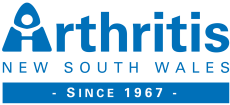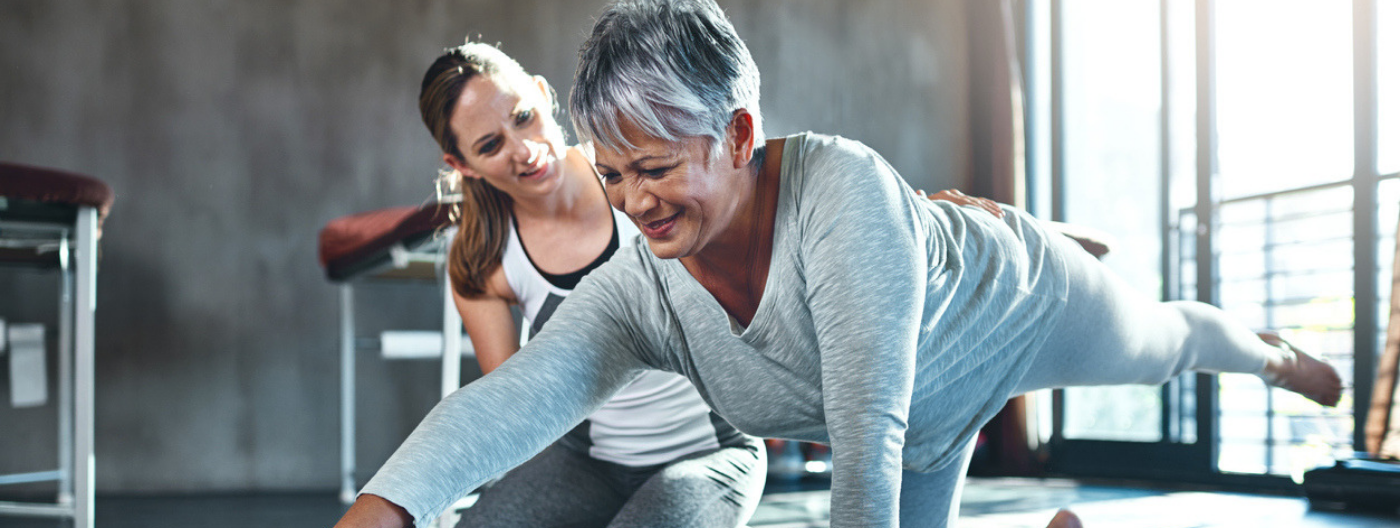It’s a well-known saying, ‘use it or lose it’, and never has this been more true than in the case of exercise and the body. One of the most significant factors when it comes to pain free movement for those who suffer from arthritis is the strength, biomechanics and endurance of their movement of day to day life. If you are not practicing, learning and repeating good movements, you’re missing out on the pain relief that beautiful movements offers the arthritic body, and what’s best of all is this type of movement is free! After all, in most cases osteoarthritis develops due to poor and excessive loading of the joints of your body and even in rheumatoid arthritis the efficient movement of your joints does wonders for alleviating the inflammatory load placed on the smaller joints.
So what do we mean when we say ’strength’, ‘biomechanics’ and ‘endurance’ and why is it important to work on these especially when you suffer from arthritis?
1. Strength
The ability of your body to lift itself against gravity; to get out of a chair, walk upstairs, carry the groceries and much more, is essentially determined by the ability of your muscle fibres to create enough force or strength to perform the task. When our muscle fibres are not strong enough to perform these activities of daily living, we end up ‘hinging’ and ‘heaving’ these movements on our joints and it is this excessive joint load that leads to and worsens the arthritic load.
2. Biomechanics
Often you may be strong enough to perform these movements, but over a period of time you have learned a pattern of movement which is just plain wrong. Poor posture, poor motor control and a variety of other bad habits often lead to a coordination of movement which is known as biomechanics. If your biomechanics is not correct the movement you repeat on a day to day occurrence may be doing your joints more harm than good. A good way to check your biomechanics is with a trusted movement professional such as a Physiotherapist. They specialise in checking your ’technique’ and giving you pointers such as leading with your sit bones when you sit, ensuring your ribcage is stacked over your pelvis when you stand and a whole host of other small but effective cues which ensure the load is distributed through the big joints of your body evenly. A very important factor when it comes to arthritic joints!
3. Endurance
You may have the strength and the correct biomechanics but if the endurance isn’t there, and you need to walk up 2 flights of stairs, the chances are that you will fatigue and end up relying on your joints before you get to the top. The endurance of your movements pertains to the ability of your body to repeat a movement correctly multiple times, after all many of the tasks we do in our day to day activities are repetitive. This means we must have built up a bank of endurance so that we don’t fatigue and fail in our movements as the day wears on. It’s also why many sufferers of arthritis describe the afternoons and evenings as their worst time of the day as they rely more and more on their joints to get them through the day.
The good news? All of this is very trainable. You can improve your strength and endurance easily with a simple program of movement in as quickly as 6 weeks! Biomechanics can be trained in as little as a half hour session with a Physiotherapist. When you consider how long people with arthritis suffer with pain, it seems mad that many of them haven’t made the small investment in themselves to learn how to correctly sit, walk, climb stairs etc and then train these movements to improve their strength and endurance! In my 10 years as a Physiotherapist, I have never come across a patient who is suffering with arthritic pain whose pain levels cannot be reduced with some simple biomechanical changes and some improvements made to their strength and endurance.
As always, these small changes are most effective when they are prescribed for you and your own body and situation, however some of you reading this article may not be able to see a Physiotherapist. With that in mind, I have compiled my top 3 tips when it comes to exercising to reduce pain with arthritis.
Top 3 Tips
- Ensure you feel your muscles working NOT your joints: There is a distinctly different feeling when you load the muscles of your body compared to when you load your joints. Both can be ‘uncomfortable’ but muscle discomfort goes away within 48hrs whereas joint discomfort tends to last much longer and worsen over time. When undertaking an exercise program always ensure you’re working to discomfort and that this discomfort is muscular not ‘jointy’.
- Choose Simple Single Plane Movements: All too often I see patients who have started a new movement routine and gone ‘gung-ho’ in their choice of movement. While boot camps, group training and other hard core fitness regimes may be great for motivation, they may not be the place to start if you have suffered from arthritis for a period of time. It is far better to focus on technique in the early days than start combining complex movements into your regime.
- Ask for Help: If you’re not sure, ask for help! There are so many wonderful movement professionals out there who literally spend their days looking at good movement. If something doesn’t feel right, ask! Rather than avoid the movement all together, all too often it’s a small change in technique that make all the difference and allows you to continue on your way to beautiful pain free movement. Don’t stop 3 feet from the gold!
So that’s it, there is a huge amount of pain free movement available to those suffering with arthritis, all you need to do is start! A few steps in the right direction, some guidance and patience will see you moving more freely and with less pain that you ever believed possible, a small price to pay for an enhanced quality of life.
Lana Johnson
Physiotherapist
Director, BPS Tensegrity
info@bpstensegrity.com
For Arthritis NSW’s exercise resources and classes to get you started visit here.
This article contains general information and advice. Every effort has been made to ensure that the information is accurate and reliable. The content of this article is not a substitute for the individual treatment advice of your doctor or health professional. Always consult your doctor or healthcare provider to obtain individual medical, management or treatment advice.
Use this as a guide only.
Arthritis NSW – we’re here to help
We’re here to help whenever you need us. We have a variety of options available for support and information.
- Register for our free webinars here
- For more BLOG articles about managing your arthritis, please visit our News page here.
- Sign up to eNews to get information and advice on managing your condition
- Call our free helpline on 1800 011 041 (Monday to Friday, 9am to 5pm)
- We are a health charity, help us to deliver our services – donate here
- Join our online community: Follow us on Facebook or Instagram
- Subscribe to our magazine, more info here
- Become a member, more info here

